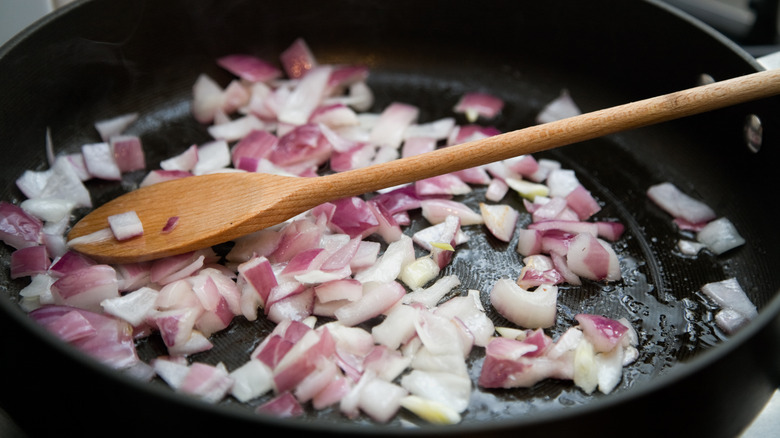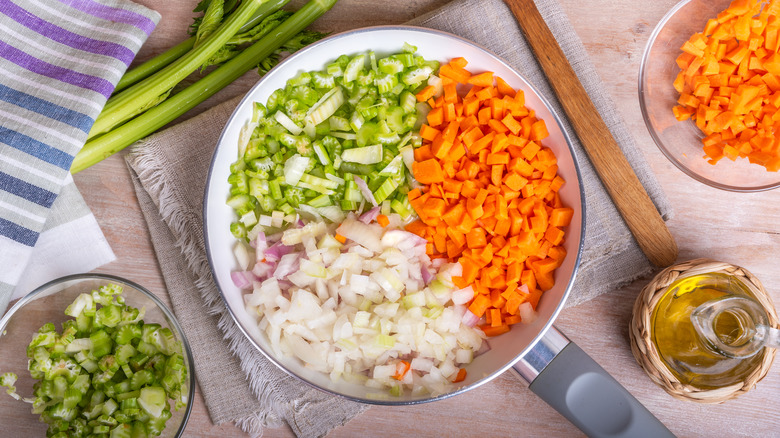What It Actually Means To 'Sweat' Your Vegetables
When it comes to cooking vegetables in a pan, a lot of terms get tossed around in different recipes: saute, sear, caramelize, sweat. But these all have very different meanings, and accomplish different things. Take sweating your vegetables — usually used for mirepoix (a French aromatic base), sofrito, the Cajun holy trinity, or other onion-based veggie mixtures, this technique involves cooking your ingredients over low heat in a pan with oil, butter, or another fat, until they start to release moisture and look like they're wet and "sweating." This transformation is easiest to see in alliums like onions and shallots, which become more tender and almost translucent when they sweat.
Sweating your veggies breaks down their cell walls, bringing out their flavors and melding them together, which is why it is a fundamental step in many soups, stews, braises, and more. And it's good to know what makes the technique distinctive, since many recipes that use a mirepoix or similar aromatic base will incorrectly tell you to "caramelize" your vegetables for five to 10 minutes. When sweating, you're not trying to get a Maillard reaction or caramelize your veggies by cooking them for a while, adding a golden-brown color and lots of rich flavors. Since anyone who knows how to caramelize onions is aware that it takes at least 45 minutes, if a recipe tells you to cook them for just a short sting, you'll know that you should sweat them instead.
How to properly sweat vegetables
Since you're supposed to avoid browning when sweating vegetables, you don't want to accidentally saute them, which would involve cooking at a higher heat. Your ingredients shouldn't take on color — in fact, they should lose it. The colors of veggies like carrots and celery will dull a bit as they release water.
To properly sweat veggies, the first thing you want to do is give your ingredients a little breathing room, so don't overcrowd the pan. You want each piece to be in contact with the oil and the hot surface below. Also, make sure that your ingredients are cut into small, evenly-sized pieces to encourage consistent cooking times. Whether or not you cover the pot while cooking depends on the recipe. When uncovered, more liquid will evaporate, which works well for comforting soup recipes, or dishes with extra liquid or sauce added later on.
Adding a bit of salt will help your veg sweat quicker, but other spices should be added after your ingredients have finished sweating. After about five minutes of cooking, or once your veggies have softened and started to release liquid, you should be ready to move on to the next part of your recipe, with a flavorful aromatic base ready to go.


